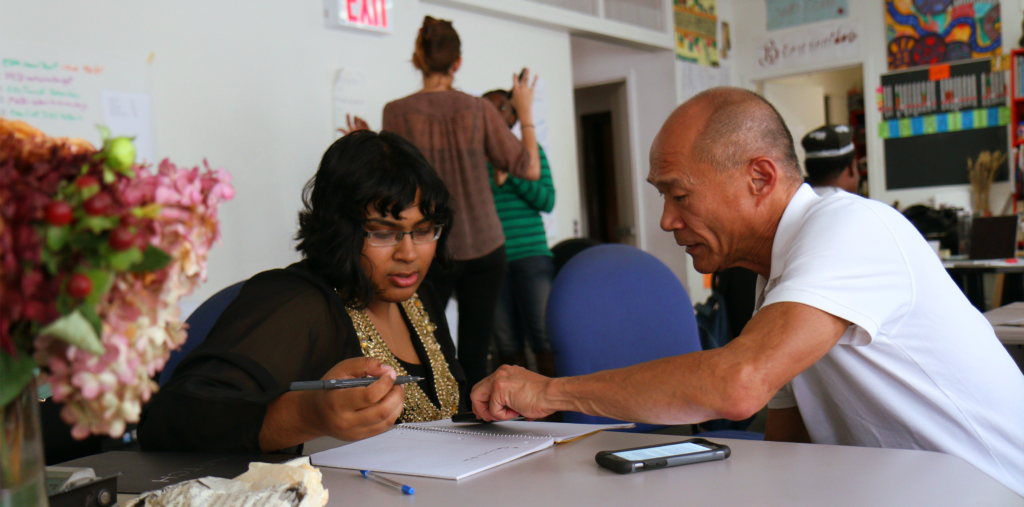Anyone who has been in and around education over the last twenty years or more can attest to the decreasing number of qualified teachers seeking jobs amid the increasing number of teaching vacancies. Teachers leave one school district for another, or they leave the profession, for various personal and professional reasons. As districts all over the United States see the applicant pool dwindle for their respective positions, more are becoming laser-focused on perhaps their greatest asset, the beginning teacher. Yet, 17% of teachers leave education within the first five years (Gray et al., 2015). So what can be done to keep new teachers in our districts, schools, and the profession? Here are 4 critical areas to consider.
Administrators Set the Tone
Just like teachers are in the classroom, administrators are the decisive element in their building or in the district, depending on the level of administration they have attained. The district-level administrator can impact building-level climate either positively or negatively. A casual criticism during a building walkthrough might result in negative changes to something teachers are doing whether it’s pedagogically or regarding the classroom environment, which in turn impacts the climate of that building. The criticism may be totally valid, but how things are framed, explained, and disseminated does matter, especially with regard to beginning teachers. As a 27-year veteran educator, I understand that the national average tenure of principals in their schools was four years as of 2016–17, and a staggering 35% of principals remain in their schools for less than two years (Levin, S. & Bradley, K., 2019). I spent nine years in a small district and had seven different principals. A beginning teacher may not have this knowledge, or even if they do, it may not matter. Oppressive atmospheres in schools and districts can result in high attrition or high numbers of teachers leaving the profession altogether. Turnover like this makes it hard to sustain a positive building culture for all teachers, so what can we do?

Build Trust, From the Top Down
Nothing productive will happen until we build trusting relationships, and that starts at the top. Once trust is established between district and school leaders, principals are more likely to think about innovative ways to help teachers and students within the current systems or by changing those systems. ]Without trust, educators, like students, won’t feel that they are safe or have that necessary sense of belonging to try new things or stray from the “how we’ve always done it” path. Without those two things, innovation is unlikely to occur in classrooms. As a consequence, teacher creativity is stifled, intrinsic motivation will decrease (see my posts, part 1 and part 2 via my research on intrinsic motivation and creativity), and unhappiness among staff will spread.
Teacher retention and attrition are also directly linked to the administration whom they serve. Administrators who build meaningful relationships with teachers are better able to serve those teachers. Trust between teachers and administrators is so important, and by working together with classroom management training or support, and clear communication can help districts avoid some of the attrition currently occurring across the country.
Foster a Supportive Climate
When it comes to growing our new teachers, the role of administrators is crucial. In fact, the support, lack of support, or perceived lack of support that administrators give their teachers can greatly affect their building’s teacher retention rate. Lack of administrator support is reported to be the most critical component of school working conditions according to teachers and can result in a near doubling of the teacher attrition rate (Sutcher, et. al., 2019). Feeling supported by administrators is one of the most valuable assets that building principals can do to also build the trust that beginning and experienced teachers need.
This is not earth-shattering news, but rather a reminder of how important supporting our teachers is, especially our new ones. Principals are always long on things they need and have to do while being short on time, but making sure teachers feel supported is one thing that should be at the top of their list. How that show of support looks will vary from building to building, state to state, and country to country, but common areas for support include the consistent handling of student discipline, the trust given to teachers to do their job, the role of teacher voice in decision-making, and the value (or lack thereof) that teachers feel from their principal. To emphasize the importance of the principal and teacher relationships, studies show that how teachers perceive their working conditions is closely linked to how they view their principals. A teacher who trusts their principal is more likely to view teaching as manageable. These researchers encourage school districts suffering from high turnover rates to evaluate teacher perceptions and find ways to train principals to improve school working conditions (Burkhauser, S., 2017).
One way to do this is for new teachers to meet one-on-one or as a group with their principal to see what support they need or how they are doing. Michael Ogg, a pre-K through 4th-grade principal in Texas does just that. He has been meeting with his new teachers one-on-one for a discussion on how things are going. Ogg talks with them about the direction they would like to go and asks what help they may need from him. That one-on-one time is a great way to build the relationship and trust new teachers need with their principal. Another primary principal, Leigh Ragsdale from Missouri, has “Coffee or Tea with Ms. Leigh” on Friday mornings, once a month. She uses that time to “catch up, share our glows, & I give them a little PD snack to focus on!” This is another great way to build relationships, trust, and the support needed for new teachers. Having it scheduled for once a month is also less of a burden for all involved than a more frequent meeting might be. A few other ideas to think about include:
- Making student teaching a paid internship that is a full year long. Retired teachers would be great mentors, as would experienced teacher leaders in your buildings.
- Make first-year teacher evaluations non-evaluative, so more feedback from administrators instead of a grade or score on a checklist. Toward the end of the school year, work in simulations of real evaluations, and support the teacher during the process.
- Teaching is a lonely profession, especially for new teachers. Use your instructional or support coaches or teacher leaders to help beginning teachers feel less isolated. This approach is also effective for veteran teachers. Some of the most impactful approaches for district leaders, where teacher retention is concerned, is to provide opportunities for expert, veteran teachers to be engaged in leading curriculum development, professional development, and instructional coaching and mentoring for their peers. (Darling-Hammond, L., Burns, D, Campbell, C., Goodwin, A. L., Hammerness, K., Low, E.L., McIntyre, A., Sato, M., & Zeichner, K., 2017).

Prioritizing Effective Professional Development
Most districts provide professional development to new teachers and new-to-the-district teachers at the beginning of the school year. That fast and furious PD may or may not be followed by targeted PD for new teachers throughout the year, but it is important that districts address this if it isn’t already in place. Districts do provide PD for all teachers throughout the year since research says that effective professional development is a key factor in teacher retention (Podolsky et al.,2018). However, new teachers also need PD to help them grow their skills in classroom management, student engagement, pedagogy fundamentals, as well as the use of district resources and technology. In my current district, new teachers meet monthly as out-of-classroom PD or once a quarter. Our instructional coaches and teacher leaders support new teachers as well, including peer coaching. Teacher leaders are selected by the building level to support instruction and community culture. So during this teacher shortage crisis, it is high time districts re-examine how they incorporate and run PD for teachers, new and experienced alike. To truly be effective for all teachers, professional development should be:
- Job-embedded. PD that is integrated into the workday. One possibly could consist of teachers assessing and finding solutions for authentic and immediate problems of practice. Another could be guided weekly walkthroughs of other teachers’ classes during prep hours with an administrator and specific ‘look-fors’ in mind that were decided on by the staff and building. After visiting a few classrooms and leaving positive feedback for the teacher on sticky notes, the teachers and admin discuss the good things going on. The key is to make this seem like a normal part of the workday and that it is relevant.
- High-impact. In order to be effective, the PD must meet student needs that the building identifies, and be: collaborative, continuous, sensible for the teachers, and lead by administrator example. If the school leaders don’t value the PD, then the teachers will follow suit. Providing PD that all teachers see as relevant is the goal.
- Personalized. Edcamp-style teacher-led sessions are a good way to achieve this for in-person sessions.
- Asynchronous & synchronous options. There are online ways to help new teachers get asynchronous PD too. Teaching Channel offers a program called EQUIP for new teachers, a professional development program that helps new teachers quickly build skills and confidence in the classroom.
Celebrate Your Teachers Through Social Media
Social recognition and respect for teachers can enhance the image and status of the teaching
profession because teachers often feel that their work is undervalued. An easy way to celebrate and acknowledge your teachers is through school social media channels. Providing teachers with shareable posts that are explicit in regarding the value that the school building and/or district has for their teachers individually is cost-effective and well worth the effort. Having teachers share approved posts about the learning going on in their classrooms also helps the district build a positive work environment image for prospective teachers. Another good practice for districts concerning new hires and beginning teachers is to feature them in a “welcome to the district” post as soon as possible on the district and/or school social media platforms. This post can contain a photo, biography, family information, education information, and fun information like hobbies or interests too. Here is an example of a post I created with my previous district in my role as communications coordinator.
Providing the community with background information on new hires and ways to interact with them before school starts is a wonderful side benefit of this type of post.
No matter what your school or district already has in place for new teachers, it is a good idea to gather data on new teacher retention and development, and regularly get feedback from currently employed new teachers on what other ways they may need support, changes that can be implemented, and anything else that would help increase the number of teachers returning to the district. At a time when districts around the nation are struggling to find qualified teachers to fill the increasing number of vacant positions, it is well worth the effort to grow our new teachers.
Works Cited
Burkhauser S. “How Much Do School Principals Matter When It Comes to Teacher Working Conditions?” Educational Evaluation and Policy Analysis. 2017. 39(1), pp. 126–145.
Darling-Hammond, L., Burns, D., Campbell, C., Goodwin, A., Hammerness, K., & Low, E., McIntyre, A., Sato, M., & Zeichner, K. (2018). “Empowered Educators: How Leading Nations Design Systems for Teaching Quality.” San Francisco, CA: Jossey-Bass.
Gray, L., and Taie, S. (2015). Public School Teacher Attrition and Mobility in the First Five Years: Results From the First Through Fifth Waves of the 2007–08 Beginning Teacher Longitudinal Study (NCES 2015-337). U.S. Department of Education. Washington, DC: National Center for Education Statistics. Retrieved April 1st, 2023, from http://nces.ed.gov/pubsearch.
Levin, S. & Bradley, K. (2019). Understanding and Addressing Principal Turnover: A Review of the Research. Reston, VA: National Association of Secondary School Principals.
Podolsky, A., Kini, T., Bishop, J., & Darling-Hammond, L. (2016). “Solving the Teacher Shortage: How to Attract and Retain Excellent Educators.” Palo Alto, CA: Learning Policy Institute.
Ramos, R., Hughes, T. (2020). “Could More Holistic Policy Addressing Classroom Discipline Help Mitigate Teacher Attrition?” JEP: eJournal of Education Policy, v21 n1.
Sutcher, L.; Darling-Hammond, L.; Carver-Thomas, D. “A Coming Crisis in Teaching? Teacher Supply, Demand and Shortages in the US.” Learning Policy Institute, 2016.
Thibodeaux, A., Labbat, M., Lee, D., & Labbat, C. (2015). The effects of Leadership and high-stakes testing on teacher retention. Academy of Educational Leadership, 19(1).








